

 Vol. 39 (Nº27) Year 2018. Page 3
Vol. 39 (Nº27) Year 2018. Page 3
Edgar SALAS Luzuriaga 1; Marco E. GORDON Beltrán 2
Received: 15/02/2018 • Approved: 08/04/2018
ABSTRACT: Generations share similar qualities such as their behavior, experiences, social trends of the time, values, among others. Generations, from the oldest to the youngest, which can be found today, are the Baby Boomers, Gen X, Millennials, Gen Z. The study's main objective is to determine the distinctive features within the group of millennials. The main results of this investigation determined that the proper way to distinguish the millennials is their logic. |
RESUMEN: Las generaciones comparten cualidades similares, como su comportamiento, experiencias, tendencias sociales de la época, valores, entre otros. Las generaciones, desde la más antigua a la más joven, que se pueden encontrar hoy en día, son los Baby Boomers, Gen X, Millennials, Gen Z. El objetivo principal del estudio es determinar las características distintivas dentro del grupo de la generación denominada millenials. Los principales resultados de esta investigación determinaron que la forma correcta de distinguir a los millennials es su lógica. |
The Center for Generational Kinetics (2016) points out the three main variables that shape a generation such as: technology, parents and the economy. The theorists William Strauss and Neil Howe, specialists in the study of generations, add in their book (Generations 1992) that historical events are also a factor.
A generation is defined as a group of individuals born in a margin of approximately 20 years, in which they share, values, vision, experiences, among others. For the analysis of the generations, the researchers use as a tool the age cohorts, this mean a group or a series of people, which are grouped depending on the mentioned variables.
Most of the studies have been done in the United States, so the limits that separate one generation from another are directly related to events that have taken place in the history of the country. It begins with the Generation GI ("general issue" or "government issue" for its acronym in English. General problem or governmental problem, named after having gone through the Great Depression), born between 1901 - 1926 (the largest today has 115 years), also known as "The Greatest Generation". They grew up during the First World War, and fought in the second world war. The members have a great sense of civic, high moral values and are excellent working as a team. Additionally, they remember life before television and airplanes.
The next generation is called "Silent Generation", those born between 1927 - 1945 (the oldest of this group today is 89 years old). During World War II but they did not fight in it. They lived in a peaceful time and where the labor supply abounded.
The next generation is the well-known as "Baby Boomers", those born between 1946 - 1964 (the oldest of this group today is 70 years old). Children of the generation, they are attributed enough changes in society. Within its characteristics are, being a selfish generation, only thinking about themselves. It was a time dominated by "buy now, pay later" with credit cards. Othe of the characteristics of this generation is that it is when people began to accept divorce and homosexuality. The second largest generation in history, the prestige was taken by the Millennials, in 2015. Finally, it is also one of the three generations that can be found within the companies, usually those who are in the lead, and who they had to give up their legacy.
Generation X, are all born between 1961 - 1981 (today the oldest in this group is 55 years), as marked by Strauss and Howe (Generations, 1992), there is also the delimitation by Harvard University, dictating that the margin is from 1965 - 1984. A generation commonly known as individualist. Besides, children that come from separated families by divorce or by parents concentrated in their careers.
The Xs are a small generation with 55M people in the United States, in relation to the Boomers with 76M and the Millennials with 83M (Unite States Census Bureau, 2015), and they usually feel misunderstood by them. Gen X members possess characteristics as a skeptical group, doubting anything they hear. They develop loyalty to the brands and have a fairly high divorce rate, which caused that there were quite a few single parents and that is why one of heir qualities is being known as individual survivors. Obsession for personal rights, seeking the collective good especially for those minority groups. And finally it is another of the generations that are inside a company, and which collides with the last generation.
In penultimate place we can find the group of Millennials, named after William Strauss and Niel Howe in his book "Millennials Rising: the next great generation (2000)". The authors conclude that millennials are all those born between 1982 and 2004. Before Strauss and Howe, this generation was known as Gen Y, however other authors define the Y as a generation of groups of people born around 1980 until close to 2000. As main characteristics, this generation is attributed to being digital, with technological knowledge integrated into its brain. Optimists, full of energy and good values. Preference for working in teams, unlike the previous generation which was considered more individual. They have also been attributed negative qualities such as laziness and irresponsibility. These same have been refuted with studies in which they emphasize the way of thinking of them and what they are looking for; they prefer a more relaxed life and look for something that they really enjoy, they look for a purpose rather than a work life. However, the millennials, being such an extensive group and having grown up in a globalized world, have a certain degree of influence from the past generations, not only of the X, but also of the Boomers.
Finally, the youngest that can be found in 2016, are the Z; which are also known by a series of names like, Homelanders (Strauss, W. Howe, N. 1992. Generations), Founders, iGen, Plurals, Post, ReGen, among others. Strauss and Howe mark the beginning of the Z since 2005 once the millennials end, to date. However other authors place the beginning of the Z around the years 1995 to date, there is no clear mark of its start. This generation is characterized by being much more digital than the millennials. They do not remember a time without computers and smartphones. There is no fidelity for a brand and like the X, they are known to be very individual. Being entrepreneurs and make studies may even come to a background when they find new markets where past generations have not fully exploited such as social networks.
The study of generations has become a subject of global discussion and it has a great importance, especially in the area of work. It is possible to find three types of different generations within the same work area. The investigators invest time in deepening in the years of the human being, it is the rivalry. The differences between generations is a problem as old as it is the differences between parents and children. The main objective of all the researches of this topic is to understand how each generation works and reach the solution of coexistence.
In Ecuador, an in-depth investigation of this type has not been carried out despite the fact that millennial generation represents approximately 48% of the country's total population according to the census conducted in 2010, with the projection of national population to 2016, millennials also occupy around 43% of the total population. Millennials are the next leaders and it is necessary to have information about how they think, their behavior, their values, among others, to improve productivity and interpersonal relationships. Problems in society, in work or school environment can benefit from knowing how to work in a better way with those of the millennium.
This research wants to know by primary and secondary sources the traits that can be found within the group of millennials. As mentioned before, the group is quite extensive and have been exposed to the influence of other generations. The result of the research will have the purpose of knowing in detail and delving into the distinctive characteristics found only within the millennials, in addition to allowing to classified them in subgroups.
General: Identify the distinctive features within the demographic group called millennials in the city of Guayaquil.
Específique:
• Identify the level of influence, by other generations, that the closest millennials have with the extremes of the group.
• Find the limited year in which the Guayaquil citizens have more affinity to belong to the millennium group.
• Classify the members of the millennium group correctly in subgroups.
• Know the main characteristics of other generations.
• Determine the evolution of older millennials when they are compared with the younger generation.
The generations carry a nickname with them, which usually summarizes the main characteristic that identifies all those who belong to the group. Probably the person who should be attributed the idea of starting this trend is Gertrude Stein, who was the first to use the term Lost Generation to those who born between 1880 – 1900 and who had to go through the first world war. This term was popularized by Ernest Hemingway in the epigraphy "The Sun Also Rises", where the author makes reference to Stein saying "You are all to the lost generation" (1926).
For the first generation of the 19th century, the theorists Strauss and Howe are credited with naming them G.I. Generation They grew up during the Great Depression, that it is their name as a general problem or governmental problem, and they fought in the Second World War. It is also known as the Greatest generation.
At the feet of the war heroes of the generation G.I. Start the Silent generation. They gained his name thanks to Time magazine, which in 1951 in an essay with anonymous author said:
“By comparison with the flaming youth of their fathers & mothers, today’s younger generation is a still, small flame; it does not issue manifestoes, make speeches or carry posters. It has been called the ‘Silent Generation’. But what does the silence mean? What, if anything does it hide?” (Time, 2015).
The Baby Boomers, who got their nickname for the Washington Post in 1971; his nickname was born due to the "boom" of births once the soldiers of the Second World War returned home.
Generation X, gained its fame in the book of Douglas Coupland called "Generation X: Tales for an accelerated Culture". This generation also had another name; in 1992 The Atlantic used the term "Thirteeners" by the authors Strauss and Howe.
The name known as millennials, was determined in 1991, in the book of Generations by Strauss and Howe, plus a half dozen books also written by the two authors separately. The name was quickly accepted making Strauss and Howe experts on the subject.
Researchers have dedicated their lives to the study of generations, and many agree on results such as: what characterizes each generation, when it begins, when it ends, what is its vision of the world, among others. However, one of the most famous theories is that of Strauss and Howe. These authors are attributed to be the creators of the term "Millennials", in addition to being known as those experts in the field, who know this generation in depth.
Strauss and Howe define a social generation as the meeting of people over a certain period of time, which can vary around 20 years. The members are part from the first year of birth until the last one. These are identified through a cohort of people who share experiences with historical events, behaviors, social trends, among others.
The authors found a pattern, within their book Generations (1992) and explained in more detail in his book The Fourth Turning (1997), identify a cycle of social ages that they call "Turnings" or Changes. First is the "High Change" is at the exit of a social crisis. In second place is "Awakening Change", at the moment when society is making progress. The third phase is called "Desenredo Cambio", it is known as the complete opposite of Alto, which comes after a crisis. It is an era where society is paused, its only desire is to enjoy what has been achieved while at its maximum potential. The last phase is "Change Crisis". An era, as its name implies, of crisis, economic as well as social.
Figure 1
Strauss and Howe generation cycle. Life Course Associates (2015).

The changes last approximately 20 years, which means that the cycle would be complete in about 80 or 90 years. The authors call it, saeculum, which in latin means "a long human life." Strauss and Howe affirmed that there is a direct relationship between historical events and people of different generations. The way in which history affects people, then they will be the ones who shape history by influencing the future generation.
At the same time that the cycle between crises and awakenings is generated, the four eras also generate four archetypes. In the book of Generations (1992) Strauss and Howe, the authors mention these archetypes as: Prophet, Nomad, Hero and Artist.
The prophets are born after a time of crisis, they could be located in the same way within the era of high change. The example of the generation today that personifies the prophet, are the Baby Boomers of the 60s. The nomads, are those born during the era of awakening, we can find the example in the members of generation X. The Heroes are formed during the era of disarray where pragmatism abounds, a time where you want to work as a team, full of energy and optimism, as we live today with the millennial generation. Finally artists are born during a time of war or great crisis. The example of the current generation of heroes are those of the younger generation, Gen Z.
Figure 2
Recent generations and their archetypes. Howe, N. Strauss, W. (1997). The Fourth Turnings.
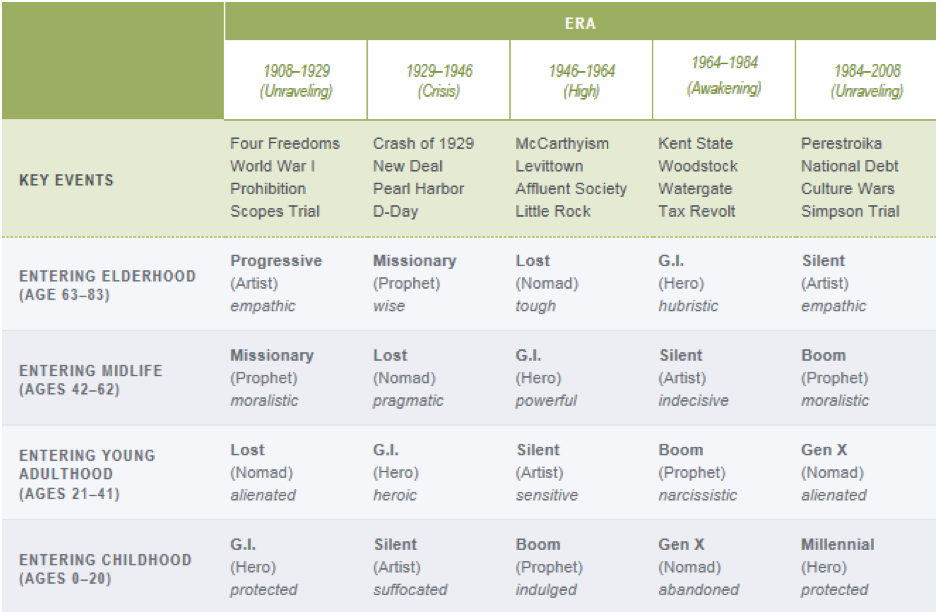
------
Figure 3
Archetypes in history. Howe, N. Strauss, W. (1997). The Fourth Turnings.
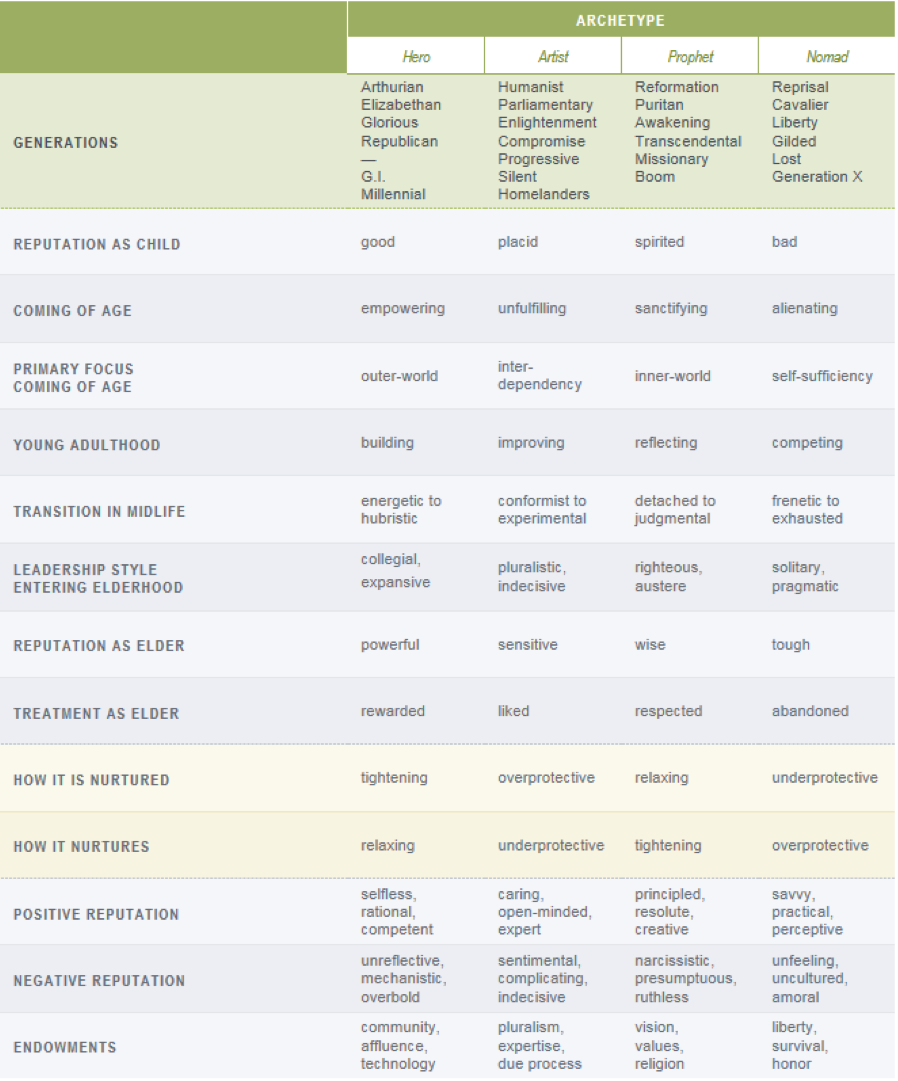
In 2015 Forbes published an article highlighting 10 qualities that have been collected from millennials. First, being a generation experiencing the globalized world, they are highly influenced by the media. The next quality is the way of thinking about owning goods. Statistics show that 71% of millennials in the United States prefer to buy a car instead of renting it, at the same time 59% consider that it is better to pay rent for a house than to buy one. Demonstrating a certain degree of maturity and responsibility when handling money. They look for opinions and references before buying something. However, they do not consult by any channel of communication, it is specially by social networks where this type of people ask about other people's experiences before making a decision; blogs or video blogs have been developed with this as one of their purposes.
Finally, they expect their brands to have an impact by helping society and the environment.
The group of millennials is credited with the following features:
Economy |
Only 6 out of 10 Millennials have jobs, half are part-time. (Harvard University, 2013). The 88% of the generation of millennials are optimistic about finding a job. (TIME, magazine, 2013).
|
Values |
The 81% have donated money, goods or services. (Walden University and Harris Interactive, 2013). On the way to becoming the most educated generation in the history of the United States. (Pew Research, trend research organization, 2013). The 61% of the millennial generation are concerned about the state of the world and they feel responsible for making a difference. (Huffington Post, blog, 2013). More tolerant of different races and groups than previous generations (47% vs. 19%). (United States Chamber of Commerce, 2013). |
As employees |
For the next year, millennials will represent 36% of the active population and the United States in 2025, will represent 75% of global workplaces. (US Bureau of Labor Statistics, 2013). The 84% say that helping to make a positive difference in the world is more important than professional recognition. (Bentley University, 2013). They have approximately the same level of commitment in an organization as boomers and Gen X. (Pew Research, trend research organization, 2013). The 70% have added their friends to their managers and / or colleagues on Facebook. (TIME, magazine, 2013) The 15% of millennials already have administrators. (Millennial Branding / PayScale, research organization, 2013). The 69% believe that regular attendance at the office is unnecessary. (Cisco, 2013). |
As consumers |
The 63% are always informed about brands through social networks. (Ipsos, blog, 2013). The 48% of Millennials say that their main motivation to buy is by references of others consumers, but not by television ads. (Intrepid, blog, 2013). The 84% say that the content generated by users on the websites of the company influences them in their time of purchase. (Bazaarvoice, blog, 2013). |
Figure 4
Generations through history. World Council of Savings and Credit Cooperatives (2016).
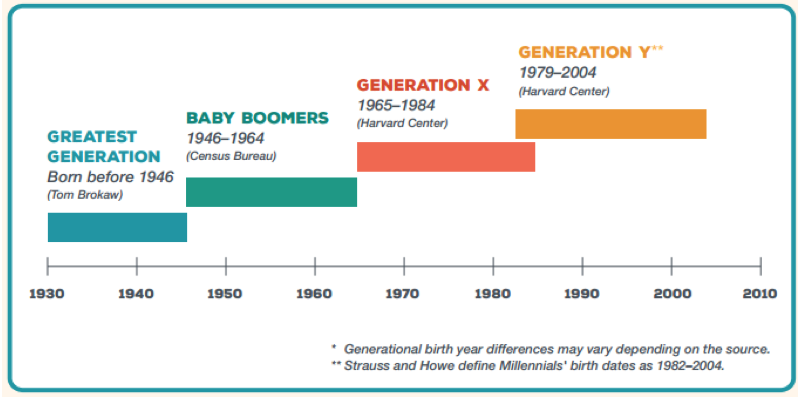
You can not ignore the other theories made by other researches where they place different limits for the generation X, Y or Z. As can be seen there is a clear discrepancy in stablishing and marking the limits, so that when it is time of correctly define the generation of the millennials you have to be careful with the extremes, which could be influenced by the previous or subsequent generation.
Gen X and Z are attributed the following traits:
Economy |
The 65% of Gen X are currently working full time. (Met Life, insurance company, 2013). Only two thirds reported being "satisfied" or "very satisfied" with their life. (American Express articles. 2013). The 54% plan to work beyond the age of 65 or do not intend to retire. (Transamerica, retirement study center 2013) |
Values |
The 50% of Gen X say that providing for their children's college costs is a primary goal. (American Express articles. 2013). |
As employees |
Almost a quarter have been with the same employer for fifteen years or more. (Met Life, insurance company, 2013). The 74% of Gen X agree with the statement "hard work is the key to getting ahead." (Readers Disgest, blog, 2013). The 70% prefer to work independently. (Harvard business review, 2013). |
As comsumers |
The 82% are the owners of a house. (Met Life, insurance company, 2013). The products that they buy more online are books (38%), clothing and accessories (33%), tickets for events (26%), and DVDs (20%). (Forrester Research, magazine, 2013). The 62% read newspapers, 48% listen to the radio and read magazines, and 45% regularly consume online television programming. (Forrester Research, magazine, 2013). The 85% who use the internet still prefer to watch their favorite shows on television. (EMarketer, blog, 2013). |
The statistical data obtained by describing Generation Z are listed. It should be noted that this research is being taken as one of the main sources to delimit Generation Z to The Center for Generational Kinetics, which concludes in its investigation that generation Z should have its year of beginning in 1996. They hold this point that the last great event for which the millennials passed was the 9/11 attack in New York, those very young have no memory of the event, consequently they should be in the next generation.
Economy |
The 77% believe that they will have to work harder in comparison to those of previous generations to have a satisfactory professional life. (Robert Half, blog, 2013). |
Values |
The 77% of Gen Z are very interested in volunteering to gain work experience. (Millennial Branding / Internships, research organization, 2013). The 79% show symptoms of emotional distress when they stay away from their personal electronic devices. (University of Maryland, 2013). The 90% would be upset if they had to give up their Internet connection. (JWT, research company, 2013). |
As employees |
Gen Z respondents say they prefer personal communications with their bosses (51%), unlike by email (16%) or instant messaging (11%). (Millennial Branding / Randstad, research organization, 2013). The 34% are more motivated by the opportunities for progress, followed by more money (27%) and significant work (23%). (Millennial Branding / Randstad, research organization, 2013). The 60% want to have an impact in the world with their jobs. (TIME, magazine, 2013). |
As consumers |
The 55% of Gen Z prefer to buy clothes online and 53% prefer to buy books online. (JWT, research company, 2013). The 43% said that their family influences their purchase decisions, secondly, are their friends (35%), friends of friends (23%) and celebrities (10%). (JWT, research company, 2013). |
As students |
The 85% make use of online research and 33% take online lessons to educate themselves. (JWT, research company, 2013). The 52% use YouTube or other social networks for school research work. (Pew Research, trend research organization, 2013). The 76% believe that their online experiences will help them achieve their goals. (TIME, magazine, 2013). |
Professor Laurence Steinberg, an expert on the development of the adolescent brain, designs a term that applies to millennials, which he calls "prolonged adolescence." In summary, this can be defined as a tendency to postpone the responsibility of adulthood. There may be multiple causes or excuses for this phenomenon, however it is something that most millennials suffer today.
Despite of having greater knowledge of how the world works, young people are still dependent on other sources, such as family members. Not taking the next step in settle down, allows the human being to remain in a state of prolonged adolescence. Steinberg explains that this state is not negative, according to the professor his studies show that many of them can have high levels of IQ because their brains are constantly learning, always looking for new experience
For the research an exploratory and conclusive study has been made. The exploratory investigation was composed of surveys and interviews. The type of research will be quantitative, so it has been decided to conduct a survey in the city of Guayaquil.
It was decided to carry out two surveys to delimit our target group. It was designed to assess the level of influence by the generations (previous and after) they possess.
The second was to determine the year limit in which they still have a greater affinity to the millennials, in that way to include them within the range to be considered for the conclusive investigation.
We continue with an interview on what form would be the most appropriate to classify millennials. The psychologists helped us to understand which method it would be more convenient to separate them and identify those different features they possess.
Finally, gathering the information obtained in the exploratory research, a random survey is conducted with the purpose of identifying those features that differentiate some millennials from others.
The population that has been taken into consideration for the present investigation is concentrated in the city of Guayaquil. According to the Ecuadorian Institute of Statistics and Census (INEC), the population in the city of Guayaquil projected to 2016 is:
Year 2016 |
|
Guayaquil |
2.617.349 |
Table 1
Population of Guayaquil 2016. INEC. http://www.ecuadorencifras.gob.ec/resultados/
To establish the number of surveys that must be carried out, it has been decided to work with a confidence level of 95%, and an error level of 5%.
Because there are no statistical data from previous studies, it has been decided to use the following formula to calculate the size of the sample, taking into account that the population that counts is infinite:
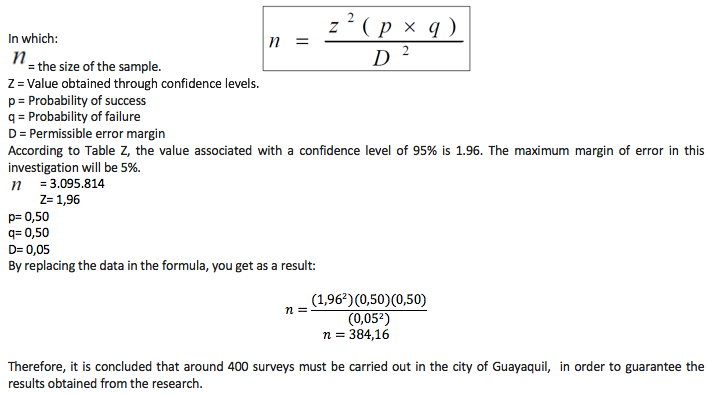
a) Survey 1
The purpose of the first survey was to assess the level of influence of the millennial group extremes, which percentage of inclination they had in relation to each generation. It was done in those born between 1982 - 1986, through a comparative table between millennials and Gen X; and those born between 1996 - 2004, through a comparative table between millennials and Gen Z.
Figure 5
Comparison between Millennials and Gen X.
Prepared by the author using the results of the first survey.
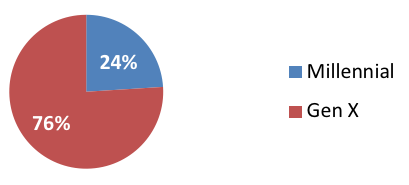
Those with ages of 30 to 34 years old have millennial qualities, however they have a 76% greater inclination to belong to generation X.
Figure 6
Comparison between Millennials and Gen X.
Prepared by the author using the results of the first survey.
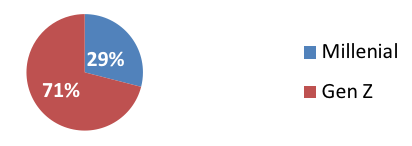
Those between 12 and 21 years old are 71% more inclined to belong to the Gen Z group. Although Strauss and Howe have dictated that by age those between 1996 and 2004 belong to the millennial generation, they seem to have a greater affinity with the qualities of the next generation.
b) Survey 2
The second survey was aimed at assessing the level of purity that is in relation to millennials.
Years |
% Purity |
1982 |
20% |
1983 |
31% |
1984 |
37% |
1985 |
60% |
1986 |
64% |
Table 2
Determination of purity, Millennials vs Gen X.
Prepared by author using the results of the second survey.
It was determined that those born in 1986 and 1987 have a purity level of 64% and 60% respectively. This should also be taken at the time of conducting the conclusive investigation, since it was shown that they have a level greater than 50% pure as a millennial
Years |
% Purity |
1996 |
70% |
1997 |
54% |
1998 |
50% |
1999 |
52% |
2000 |
45% |
2001 |
25% |
2002 |
17% |
2003 |
20% |
2004 |
17% |
Table 3
Determination of purity, Millennials vs Gen X.
Prepared by author using the results of the second survey.
Likewise, it was determined that those born between 1996 and 1999 have a higher percentage than 50% of purity since they are millennial, therefore they will be counted at the time of conducting the conclusive investigation. Those born in 1996 showed a 70% purity, those of 1997 54%, those of 1998 50% and those of 1999 52% purity.
For the conclusive research, it has been sought to classify millennials into those that remain in a prolonged adolescence and those that do not. Interviewing two psychologists helped obtain the requirements they must meet to be in each group. Among the characteristics are the purchasing power they possess, enough to have economic independence. The point of view in front of social problems, if they are really committed to making a change or not. Thinking about relationships, if you want to continue looking for multiple relationships or settle down with commitment. Finally the purpose with themselves, what are they doing to achieve their life goals.
Figure 7
Question 1. Elaborated by the author using the
results of the survey on prolonged adolescence.
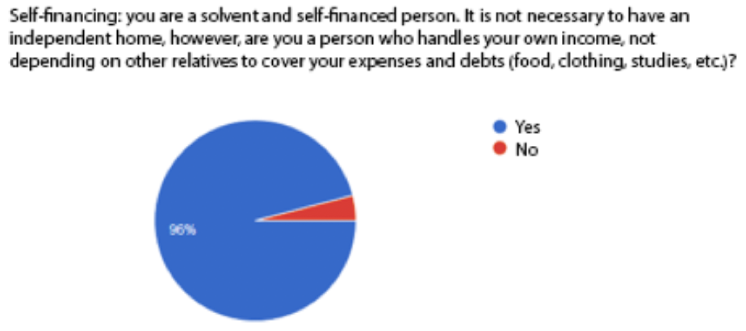
The 96% of those born between 1985-1988 responded affirmatively to having total control over their finances.
Figure 8
Question 1. Elaborated by the author using the
results of the survey on prolonged adolescence.
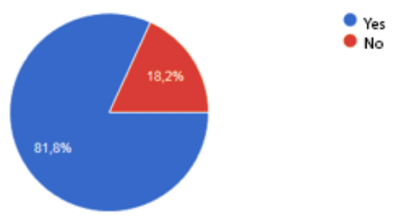
The 82% of those born between 1989-1992 affirmed that they have reached the point of independence.
Figure 9
Question 1. Elaborated by the author using the
results of the survey on prolonged adolescence.
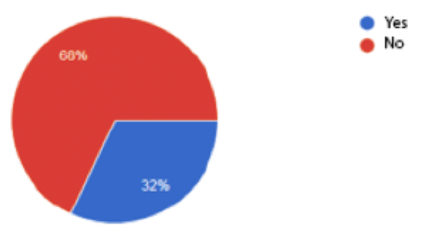
Only 32% of those born between 1993-1996 confirmed being economically independent.
Figure 10
Question 1. Elaborated by the author using the results of the survey on prolonged adolescence.
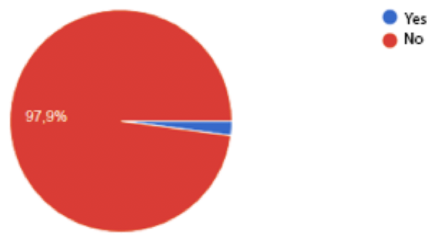
The 98% of those born between 1997-1999 confirm that they are still dependent on others.
Figure 11
Question 3. Elaborated by the author using the results of the survey on prolonged adolescence.
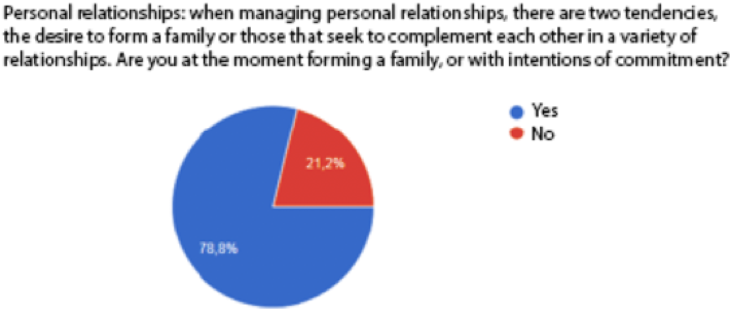
The 79% of those born between 1985-1988 are found or forming a family or with intentions of.
Figure 12
Question 3. Elaborated by the author using the
results of the survey on prolonged adolescence.
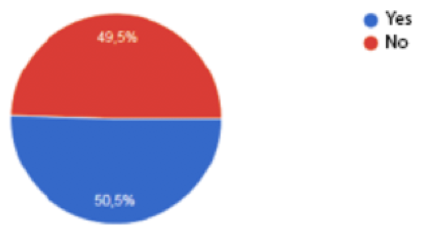
It is observed that 51% of those born between 1989-1992 are seeking compromise.
Figure 13
Question 3. Elaborated by the author using the results of the survey on prolonged adolescence.
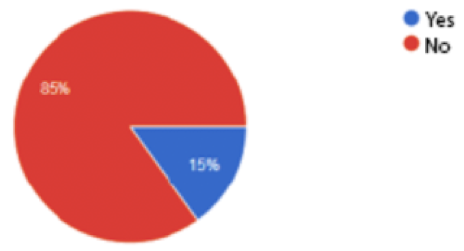
At the moment only 15% of those born between 1993-1996 wish to commit themselves to a personal relationship.
Figure 14
Question 3. Elaborated by the author using the results of the survey on prolonged adolescence.
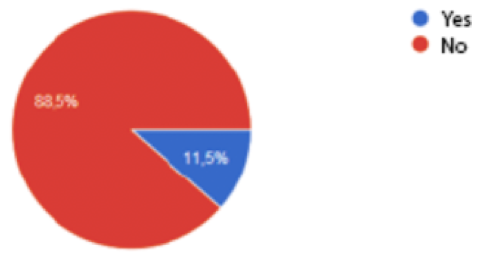
The 12% of those born between 1997-1999 look for commitment in the future instead of multiple relationships.
Figure 15
Question 4. Elaborated by the author using the
results of the survey on prolonged adolescence.
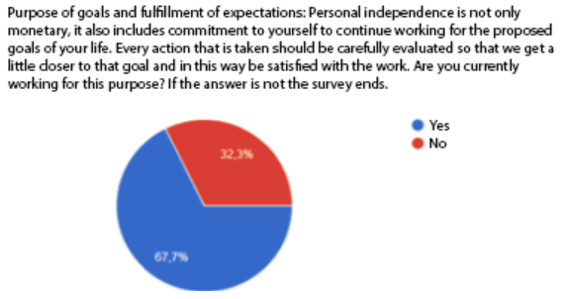
The 68% of those born between 1985-1988 are working to reach their life goal, or have already reached it.
Figure 16
Question 4. Prepared by the author using the
results of the survey on prolonged adolescence.
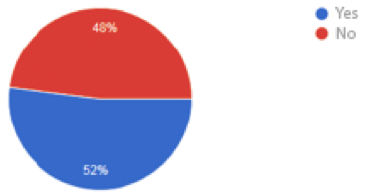
It is observed that 55% of those born between 1989-1992 are working to reach their goal or have already achieved it.
Figure 17
Question 4. Elaborated by the author using the
results of the survey on prolonged adolescence.
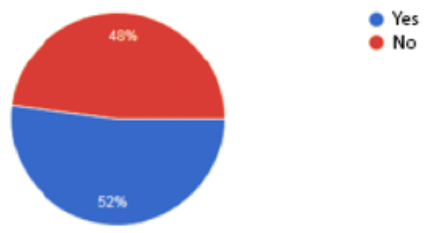
The 52% of those who were born between 1993-1996 are making merit to achieve their life purpose.
Figure 18
Question 4. Elaborated by the author using the
results of the survey on prolonged adolescence.
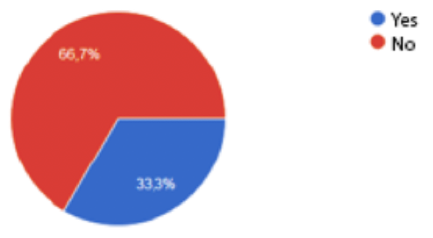
Only the 33% of those born between 1997-199 are searching for their life goal.
It is concluded that millennials are divided by their logic, which is directly related to age. The differences within this group is due to a phenomenon called prolonged adolescence. Those outside of it have the characteristics of having achieved economic independence, have more awareness and desire to be the solution to current social problems, seek commitment to a personal relationship and be focused on achieving or maintaining their life goals. The reason why it is not grouped by age is because there is a possibility that a millennial in its 28 years is still locked in adolescence but at the same time one under 21 may have left it.
Around 80% of those who were born before 1993 seem to have come out of prolonged adolescence. They perceive the world in a different way, they reached their independence and they are not entirely equal to the millennials that were born after 93, they want to form a family and to take actions in order to change the society. You can see how as they grow, aspects of their lives change, bringing them closer to maturity. Even today young people with 20-year-olds, 48% are still not focused on their life goals, are far from their economic independence and are perceived to seek more personal relationships before settling down.
It is recommended to conduct a national investigation. Deepen these traits and get to develop more subgroups to easily understand what millennials are looking for in Ecuador. This research may aim to find methods to solve problems of coexistence between generations and among millennials in a work area, improve teamwork.
Sanburn, J. (2015). How every generation of the last century got their nickname. Recovered el 15 de Afosto de: http://time.com/4131982/generations-names-millennials-founders/.
Strauss, W. Howe, N. (1997). The Fourth Turning: What the Cycles of History Tell Us About America’s Next Rendezvous with Destiny. New York: Broadway Books.
Pew Research Center. (2015.). The ways and how of generation research. Recovered August 15 from: http://www.people-press.org/2015/09/03/the-whys-and-hows-of-generations-research/.
Pew Research Center. (March 19, 2015.). Comparing Millennials to other generations. Recovered August 15 from: http://www.pewsocialtrends.org/2015/03/19/comparing-millennials-to-other-generations/
Howe, N. (27 de Octubre de 2014). Introducing the Homeland Generation. Forbes. Recovered August 15 from: http://www.forbes.com/forbes/welcome/?toURL=http://www.forbes.com/sites/neilhowe/2014/10/27/introducing-the-homeland-generation-part-1-of-2/&refURL=&referrer=
Howe, N. Strauss, W. (1991). Generations: The History of America's future, 1584 - 2069. New York: William Morrow & Company.
Howe, N. Strauss, W. (1993). 13th Gen: Abort, Retry, Ignore, Fail?. New York: Vintage Books.
Smith, C. (11 de Agosto de 2016). By the Number: 98 Important Millennials Statistics. DMR. Recovered August 15 from: http://expandedramblings.com/index.php/millennial-statistics-for-marketers/
Howe, N. Strauss, W. (2000). Millennials Rising: The Next Great Generation. New York: Knofp Doubleday Publishing Group.
Howe, N. Strauss, W. (2007). Millennials & K-12 Schools: Educational strategies for a new generation. Great Falls: LifeCourse Associates.
Schawbel, D. (January 20, 2015). 10 New Findings about the Millennials consumer. Forbes. Recovered August 15 from: http://www.forbes.com/sites/danschawbel/2015/01/20/10-new-findings-about-the-millennial-consumer/2/#42d7e8e242b8
Howe, N. Strauss, W. (2008). Millennials go to College: Strategies for a new generation on campus (2nd ed). Great Falls: LifeCourse Associates.
Novak, J. (2016). The Six living Generations in America. University of Phoenix. Recovered August 15 from:: http://www.marketingteacher.com/the-six-living-generations-in-america/.
Schawbel, D. (July 25,2013). 74 Of The Most Interesting Facts About Millennials. Recovered el 15 de Agosto de: http://danschawbel.com/blog/74-of-the-most-interesting-facts-about-the-millennial-generation/.
Schawbel, D. (july 17, 2014). 51 Of The Most Interesting Facts About Generation Z. Recovered August 15 from: http://danschawbel.com/blog/39-of-the-most-interesting-facts-about-generation-z/
Schawbel, D. (July 26, 2015). 44 Of The Most Interesting Facts About Generation X. Recovered August 15 from: http://danschawbel.com/blog/44-of-the-most-interesting-facts-about-generation-x/
National Institute of Statistics and Censuses. (2010). Results of the 2010 census. Guayas province. Recovered August 15 from: http://www.ecuadorencifras.gob.ec/wp-content/descargas/Manu-lateral/Resultados-provinciales/guayas.pdf
Life Course Associates (2011). Consulting company built on the generational discoveries of Niel Howe and Williams Strauss. Generational Archetypes. Recovered August 15 from: http://www.lifecourse.com/about/method/generational-archetypes.html
Life Course Associates (2011). Consulting company built on the generational discoveries of Niel Howe and Williams Strauss. Why Generations matter. Recovered August 15 from: http://www.lifecourse.com/services/generations-in-the-workforce/white-paper/
Life Course Associates (2011). Consulting company built on the generational discoveries of Niel Howe and Williams Strauss. The Four Turnings. Recovered August 15 from: http://www.lifecourse.com/about/method/the-four-turnings.html
The Center for Generational Kinetics. (2016). Questions & Answers. Recovered August 15 from: http://genhq.com/faq-info-about-generations/
Bump, P. (march 13, 2014). Here is When each Generation begins and end, acoording to facts. The Atlantic. Recovered August 15 from: http://www.theatlantic.com/national/archive/2014/03/here-is-when-each-generation-begins-and-ends-according-to-facts/359589/
Steinberg, L. (2014). Age of Opportunity: Lessons from the new science of adolescence. New York: Eamon Dolan Book.
Steinberg, L. Greenberger, E. (1988). When Teenagers work: The psychological and social costs of adolescent employment. New York: Perseus Book Group.
Steinberg, L. Lerner, R, M. (2009). HandBook of Adolescent Psychology. New Jersey: John Wiley & Sons.
1. Director Académico de la Facultad de Comunicación en la Universidad de Especialidades Espíritu Santo, Máster en Diseño & Branding, esalas@uess.edu.ec
2. Jefe de inteligencia de Mercado en Cormin Cia. Ltda, Ing. En Marketing y Publicidad, mgordon@uees.edu.ec